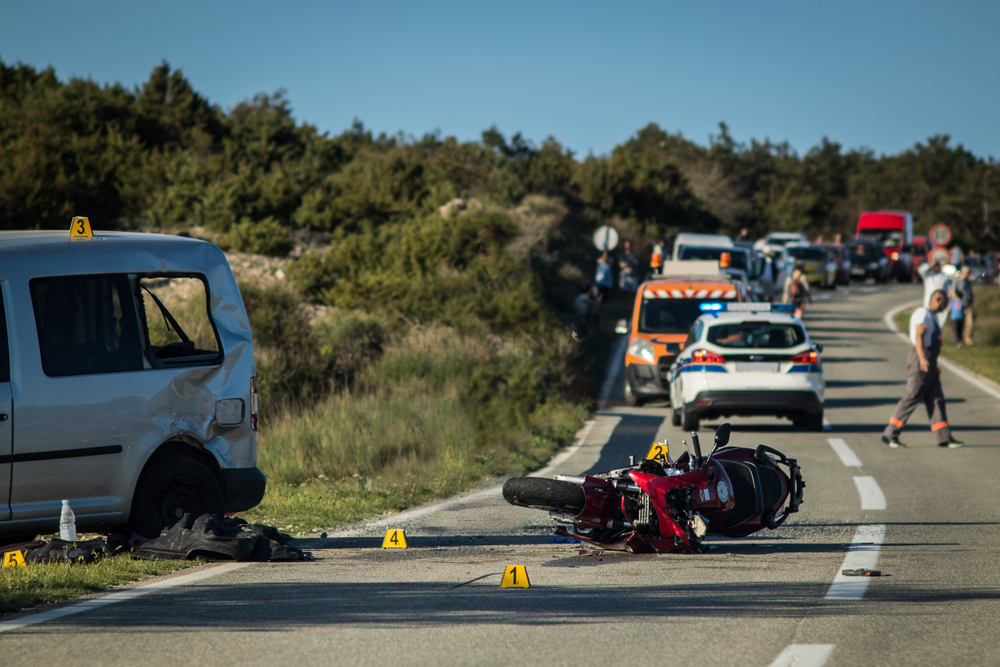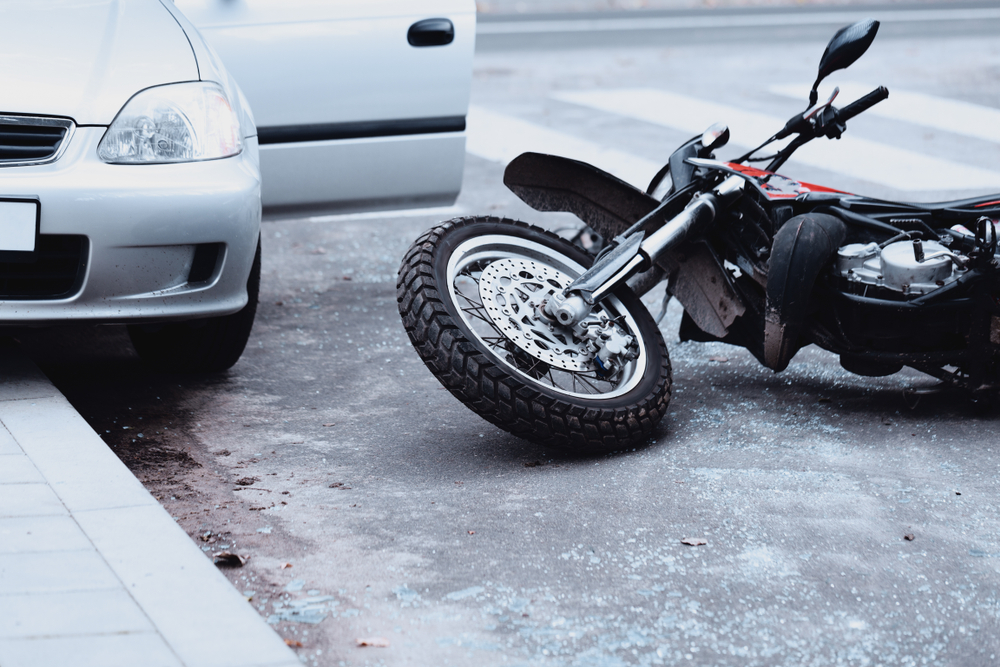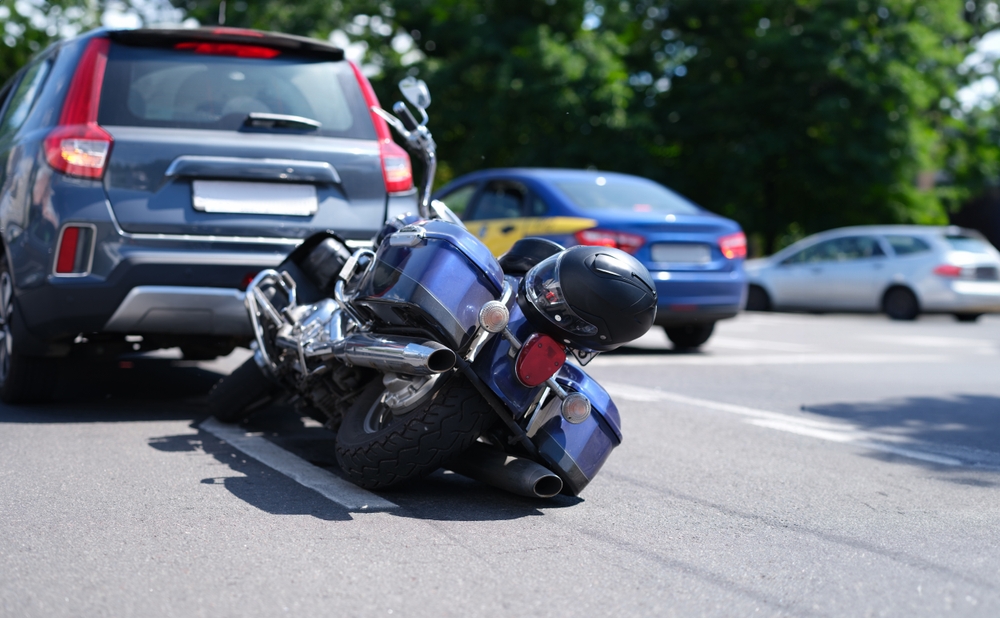You have to wear a helmet when you ride your motorcycle. No exceptions.
The importance of donning a motorcycle helmet whenever you ride cannot be overemphasized. As a rider in California, it is not just a smart safety ritual but also a legal requirement.
California law is explicit about motorcycle drivers and passengers alike; they must invariably wear helmets. The mandate is not only for your safety, but it also has a role to play in the eventuality of a mishap and compensatory affairs related to it.

The absence of a helmet during a motorcycle accident may provide leverage to allegations of you being partially accountable for any injuries inflicted. Helmets significantly reduce the risk of severe injuries. Hence, not wearing one might be interpreted as an act of negligence on your part.
California follows the principle of ‘comparative negligence’. A unique aspect of this doctrine is that it allows victims who may have been in part at fault for their injuries to still seek compensation for their trauma, suffering, and physical damages. Simply put, even if you were not wearing a helmet during your motorcycle accident, you reserve the right to seek remuneration for your injuries.

We, as a firm, have a rich history of assisting clients who find themselves in such complex situations. Our team has helped many clients navigate the intricacies of the comparative negligence system, turning unfortunate events around to ensure they receive the reparation they are entitled to. Whether it’s your pain, suffering, or physical injuries, we ensure your rights are upheld and your needs are met.
Our commitment is to assist and defend our clients’ rights, ensuring they can recover from their injuries both physically and financially.
On the other hand, if the other party wasn’t wearing a helmet, it could potentially help your case. We will conduct a thorough investigation to determine exactly what happened and then use it to make the most compelling case on your behalf.

Schedule a free case evaluation with us through our site or by calling.
Whether you’ve been at the helm of your motorcycle during the accident or not, your path to redressment and claim for due compensation can be effectively facilitated by Belal Hamideh, an experienced motorcycle accident lawyer.
How a Motorcycle Accident Lawyer Can Help Your Case
Riding a motorcycle offers an unprecedented sense of freedom and exhilaration, but it isn’t without its hazards. The severity of injuries sustained in a motorcycle accident can be tremendously high; it can cause serious physical harm or even fatality to you and your loved ones. An alarming statistic reveals that over 15% of traffic fatalities in California result from motorbike accidents.
Motorcycle mishaps not only wreak havoc on your health but also lead to hefty medical bills that can potentially spiral into millions. These expenses may range from immediate healthcare needs to long-term care, rehabilitation, loss of work capabilities, compensation for physical and emotional pain, among others. Legal assistance from someone like Belal Hamideh can be instrumental in your journey towards financial recovery. We extend our support by offering a free consultation, ensuring you’re on the right track to claim every dollar you deserve.
Wondering if it’s indeed worth investing in a motorcycle accident lawyer? It’s a resounding yes. A proficient lawyer specializing in motorcycle accidents can fiercely safeguard your interests and legal rights while advocating for your entitlement to the maximum possible compensation.
An attorney armed with expertise and a robust knowledge base about motorcycle accidents knows exactly how to evaluate your case so that you receive complete compensation without faltering. Acquainted with all legal deadlines—be it for filing a lawsuit, presenting evidence—they ensure your interests are never compromised. Additionally, they efficiently handle all nitty-gritty details such as managing medical bills, procuring police reports, and other critical tasks, affording you peace of mind.
Furthermore, an accomplished motorcycle accident attorney is well-versed in dealing with insurance companies. Armed with a thorough understanding of your insurance policies and the strategies insurance companies often employ, they can negotiate your insurance claim effectively, ensuring you receive a fair settlement, be it in or out of court.
So, you might ask, what compensation am I entitled to after a motorcycle accident? Compensation claims can be broadly categorized into economic and non-economic damages. Economic damages cover the tangibles—medical bills, lost income, cost of motorcycle repair or replacement, future medical needs, home modifications if the need arises, and more. If your injuries are severe involving long-term rehabilitation or physical therapy, these costs are also factored in.
Non-economic damages, on the other hand, cover intangibles such as physical pain, emotional trauma, and the overall adverse impact on your lifestyle post-accident. These damages may also include “Loss of Consortium”—if you have lost a spouse due to the accident, and “Loss of enjoyment of life,” which compensates for your inability to participate in activities you once enjoyed. At Belal Hamideh Law, we stand by you to ensure that you receive every bit of the compensation you warrant.
Identifying the Liable Parties in Motorcycle Accidents
In the wake of a motorcycle accident, the individual responsible for the crash is usually the person you can file a lawsuit against. However, this is simply the first step in the journey. It is crucial to prove that negligence on the part of the other driver was the root cause of your accident and subsequent damages.
To build a solid case grounded in negligence, your legal counsel and yourself must demonstrate four critical elements. Firstly, it must be clear that the defendant owed you a duty of care. This essentially refers to their responsibility of adopting a safe and rational manner of driving in consideration of other road users. The next step is to assert that they failed in fulfilling this duty due to their actions or lack thereof. Following this, you must provide evidence linking this breach to your accident. The final hurdle is proving that your accident resulted in damages. An adept attorney can guide and support you through these stages.
Time Frame for Settling a Motorcycle Accident Claim
The period required to settle a claim involving a motorcycle accident varies greatly owing to the unique circumstances of each case. Our firm has worked with clients who received a settlement within a few weeks, while others had to patiently wait for several years and even endure trials. We are dedicated to fighting fiercely for clients who have incurred injuries due to accidents. We can confidently assure that the sooner you engage an attorney, the sooner we can commence the fight for your rightful compensation.
Prevalent Situations of Motorcycle Accidents
Motorcycle accidents most commonly involve collisions with vehicles larger than the motorcycle. This is particularly recurrent in the California region, probably due to its bustling commercial port which sees thousands of heavy vehicles on its roads daily. Furthermore, California’s population owns approximately 900,000 vehicles, adding to the risks motorcyclists face.
Regrettably, driving under the influence is the leading cause of motorcycle accidents, accounting for about a quarter of fatal motorcycle crashes. Other contributing factors include speeding, inexperienced drivers, distraction or reckless driving, and lane splitting. However, many circumstances are beyond a motorcyclist’s control such as faulty motorcycles, dangerous road conditions, impaired visibility, and more.
Consequences of Motorcycle Accidents
Motorcycle accidents often result in grave injuries such as fractures, whiplash, severe burns from road rash, traumatic brain injuries (TBI), spinal cord damage, and in dire cases, partial or complete paralysis. Regardless of the nature of your injuries sustained in an accident, our team is ready to offer the help you need.
Understanding the Crucial Steps Following a Motorcycle Collision
In the perturbing aftermath of a motorcycle accident, a flood of adrenaline and shock may make it difficult for you to think clearly or immediately comprehend the implications of the situation. Nonetheless, it’s essential to follow certain steps for your own wellbeing and to preserve your rights.
First and foremost, ensure your safety. If possible, move away from the accident scene to avoid further risk. Even if you feel unharmed, seek immediate medical attention since some injuries may not manifest symptoms right away. Secondly, notify the police. A thorough police report serves as a crucial piece of evidence in personal injury claims.
In addition, exchange contact information with the other party involved in the accident. Make sure to get their name, phone number, driver’s license number, physical address, insurance details, and a description of their vehicle. Being able to document the incident accurately can support your case, so try to take photos of your injuries and the accident scene if you have the ability to do so. However, avoid admitting fault prematurely. There is no need to accept blame for the accident at this stage.
Engaging the services of a seasoned attorney can be invaluable in such situations. A knowledgeable legal professional can guide you through the complexities of the legal process, advocating for your rights every step of the way.
The Scenario of an Uninsured Motorcycle Accident:
Even if you don’t have insurance, it is still possible to receive compensation if the other party is culpable for the accident. However, the lack of liability coverage can potentially lessen the compensation amount.
It’s worth noting that even if you’re the victim and not the culprit in a collision, California laws mandate all drivers to carry liability insurance, and so, not being insured can invite penalties. Specifically, you may face sanctions that prevent you from seeking compensation for non-economic damages such as pain and suffering. Instead, you’ll be limited to claim remuneration for your economic damages. Despite these limitations, an experienced attorney can still assist you in securing the maximum possible compensation.
Choosing a Trusted Long Beach Motorcycle Accident Attorney:
Belal Hamideh, a respected motorcycle accident lawyer, carries a wealth of experience helping victims of similar accidents. He’s dedicated to putting this vast experience at your disposal, fighting for your rights without demanding any fees until winning the case for you.
Although you might be tempted to delay contacting an attorney, the sooner you do, the better your prospects of securing maximum compensation. In California, you have two years from the accident date to file a lawsuit for your injuries. However, acting promptly increases the likelihood of a swift resolution and receiving your due compensation sooner. The last thing you want is to let it be too late for you to receive what you’re entitled to. We’re always ready to help you navigate this challenging time.
California Motorcycle Laws
These laws may pertain to your situation. If you have further questions, don’t hesitate to reach out to Belal.
2009 California Vehicle Code – Section 27800-27803 :: Article 7. Motorcycles
VEHICLE CODE
SECTION 27800-27803
- It is unlawful for a driver of a motorcycle or a motorized
bicycle to carry any other person thereon, except on a seat securely
fastened to the machine at the rear of the driver and provided with
footrests, or in a sidecar attached to a motorcycle and designed for
the purpose of carrying a passenger. Every passenger on a motorcycle
or a motorized bicycle shall keep his feet on the footrests while
such vehicle is in motion.
- A person shall not drive a two-wheel motorcycle that is
equipped with either of the following:
(a) A seat so positioned that the driver, when sitting astride the
seat, cannot reach the ground with his or her feet.
(b) Handlebars so positioned that the hands of the driver, when
upon the grips, are more than six inches above his or her shoulder
height when sitting astride the seat.
- (a) The department may adopt reasonable regulations
establishing specifications and standards for safety helmets offered
for sale, or sold, for use by drivers and passengers of motorcycles
and motorized bicycles as it determines are necessary for the safety
of those drivers and passengers. The regulations shall include, but
are not limited to, the requirements imposed by Federal Motor Vehicle
Safety Standard No. 218 (49 C.F.R. Sec. 571.218) and may include
compliance with that federal standard by incorporation of its
requirements by reference. Each helmet sold or offered for sale for
use by drivers and passengers of motorcycles and motorized bicycles
shall be conspicuously labeled in accordance with the federal
standard which shall constitute the manufacturer’s certification that
the helmet conforms to the applicable federal motor vehicle safety
standards.
(b) No person shall sell, or offer for sale, for use by a driver
or passenger of a motorcycle or motorized bicycle any safety helmet
which is not of a type meeting requirements established by the
department.
- (a) A driver and any passenger shall wear a safety helmet
meeting requirements established pursuant to Section 27802 when
riding on a motorcycle, motor-driven cycle, or motorized bicycle.
(b) It is unlawful to operate a motorcycle, motor-driven cycle, or
motorized bicycle if the driver or any passenger is not wearing a
safety helmet as required by subdivision (a).
(c) It is unlawful to ride as a passenger on a motorcycle,
motor-driven cycles, or motorized bicycle if the driver or any
passenger is not wearing a safety helmet as required by subdivision
(a).
(d) This section applies to persons who are riding on motorcycles,
motor-driven cycles, or motorized bicycles operated on the highways.
(e) For the purposes of this section, “wear a safety helmet” or
“wearing a safety helmet” means having a safety helmet meeting the
requirements of Section 27802 on the person’s head that is fastened
with the helmet straps and that is of a size that fits the wearing
person’s head securely without excessive lateral or vertical
movement.
(f) This section does not apply to a person operating, or riding
as a passenger in, a fully enclosed three-wheeled motor vehicle that
is not less than seven feet in length and not less than four feet in
width, and has an unladen weight of 900 pounds or more, if the
vehicle meets or exceeds all of the requirements of this code, the
Federal Motor Vehicle Safety Standards, and the rules and regulations
adopted by the United States Department of Transportation and the
National Highway Traffic Safety Administration.
(g) In enacting this section, it is the intent of the Legislature
to ensure that all persons are provided with an additional safety
benefit while operating or riding a motorcycle, motor-driven cycle,
or motorized bicycle.
2023 California Code
Vehicle Code – VEH
DIVISION 12 – EQUIPMENT OF VEHICLES
CHAPTER 5 – Other Equipment
ARTICLE 7 – Motorcycles
Section 27803.
- (a) A driver and any passenger shall wear a safety helmet meeting requirements established pursuant to Section 27802 when riding on a motorcycle, motor-driven cycle, or motorized bicycle.
(b) It is unlawful to operate a motorcycle, motor-driven cycle, or motorized bicycle if the driver or any passenger is not wearing a safety helmet as required by subdivision (a).
(c) It is unlawful to ride as a passenger on a motorcycle, motor-driven cycles, or motorized bicycle if the driver or any passenger is not wearing a safety helmet as required by subdivision (a).
(d) This section applies to persons who are riding on motorcycles, motor-driven cycles, or motorized bicycles operated on the highways.
(e) For the purposes of this section, “wear a safety helmet” or “wearing a safety helmet” means having a safety helmet meeting the requirements of Section 27802 on the person’s head that is fastened with the helmet straps and that is of a size that fits the wearing person’s head securely without excessive lateral or vertical movement.
(f) This section does not apply to a person operating, or riding as a passenger in, a fully enclosed three-wheeled motor vehicle that is not less than seven feet in length and not less than four feet in width, and has an unladen weight of 900 pounds or more, if the vehicle meets or exceeds all of the requirements of this code, the Federal Motor Vehicle Safety Standards, and the rules and regulations adopted by the United States Department of Transportation and the National Highway Traffic Safety Administration.
(g) In enacting this section, it is the intent of the Legislature to ensure that all persons are provided with an additional safety benefit while operating or riding a motorcycle, motor-driven cycle, or motorized bicycle.
(Amended by Stats. 1997, Ch. 710, Sec. 4. Effective January 1, 1998.)
